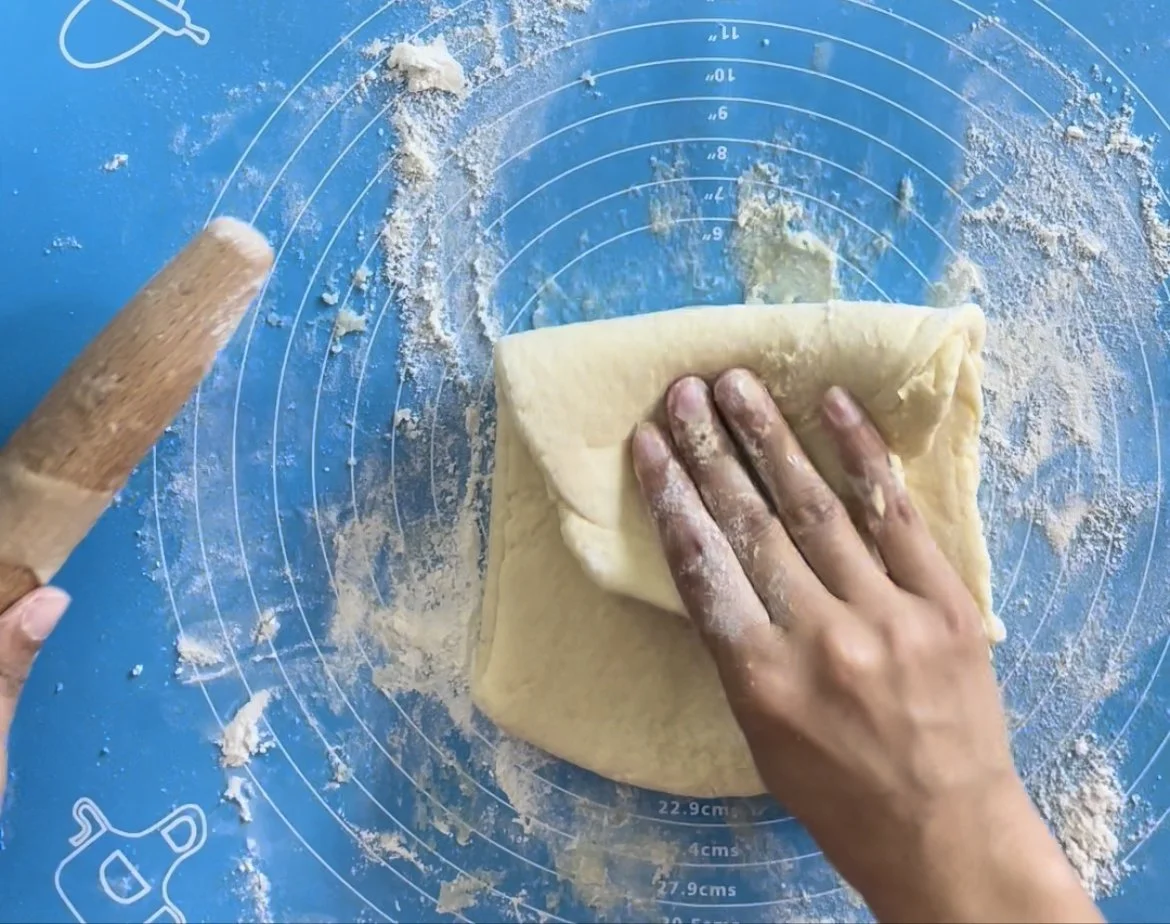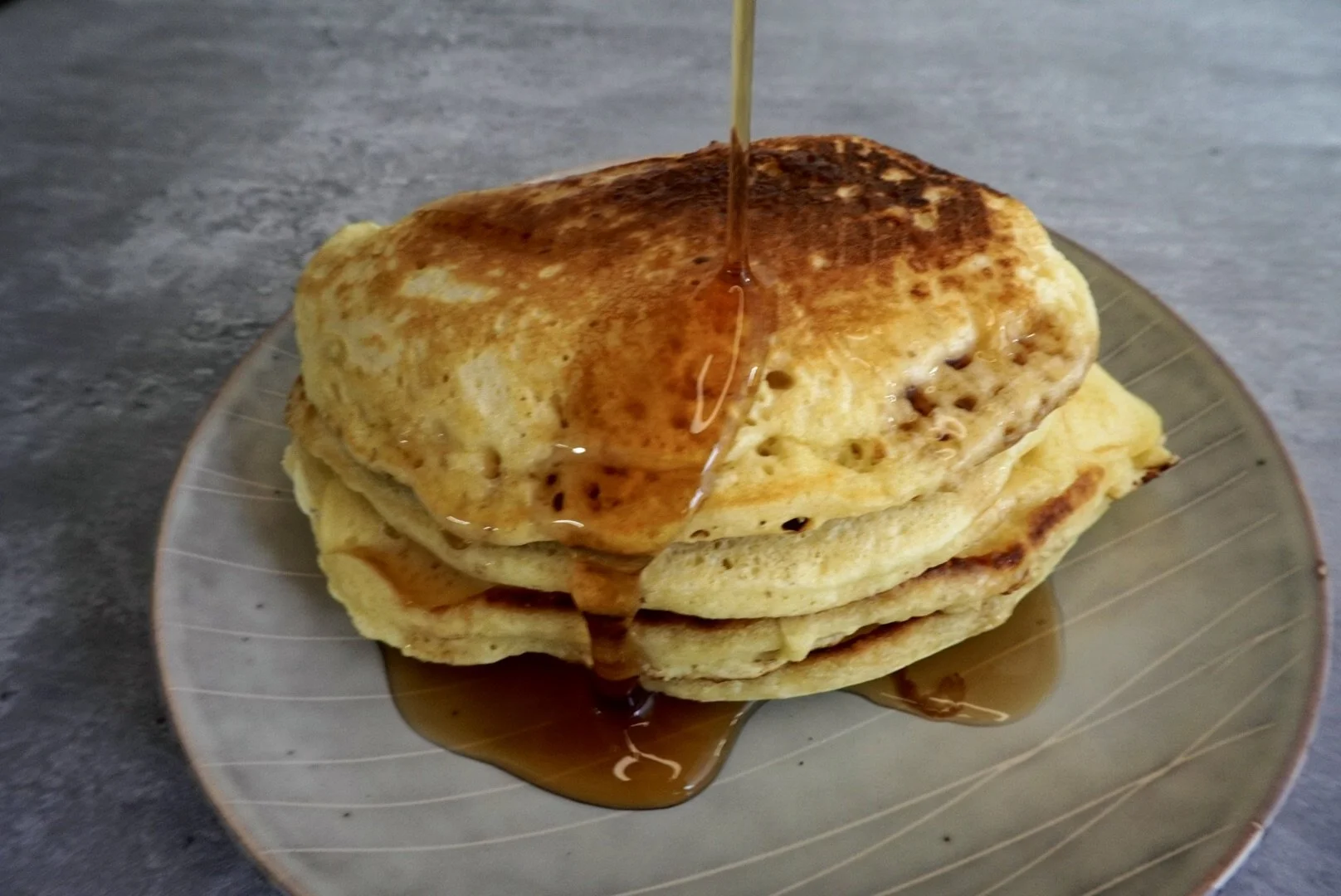This Food in History #6 Pastry
Hello and welcome to This Food in History! I’m Soph your host and today we will be looking at a foundational item in some of my favorite things: Pastry! We’ll be looking at the origins and variations of pastry dough and different dishes around the world that have born from it. So lets dive in!
While researching the history I found a few conflicting ideas of where it came from. My final answer is Egypt! They helped birth baking with a bread made from soaking grains in water and cooking it on hot rocks. This is something we have ventured into a few times when learning about Pizza as well! They are also the first recorded civilization to create their bread with yeast. Gatocakes.com reports that this came about from leaving the bread out in the elements and it became exposed to wild yeast and fermented. It’s theorized that this gave them dough to bake later. I found some data that suggested these early uses from Egyptians and later Greek and Romans were a filo type pastry that was made with just flour and oils. Baklava is an example of a modern day use of this thin sheet pastry. In the past these were used with fruits or dates and nuts in a dumpling format and writings on tombs show evidence of these treats.
While in 2014 some of the oldest ovens were found in Croatia, Greece is known to have invented enclosed wood heated ovens around 5 or 600 BC. These could be communal for the lower class while wealthy members of society would own individual use ones. This was all for baking breads.
Rome would then take up the mantel by essentially establishing mass production baking and also a Roman Empire Baker’s Guild by 168 BC. They were called the Pistorum and they considered bread bakers as skilled artisans. This high regard is echo’d in an annual festival that celebrates Fornax the oven Goddess. The spread of the Roman Empire then spreads baking around Europe. They also added fats and honey to breads to bring us enriched bread and our first pastries! The pastry dough was used to wrap meats and game to hold in juices and aromas while roasting. They didn’t believe it to be for eating and would throw the pastry dough away before eating the contained meals.
These early pastries would evolve into shortcrust as fats and milks were added into the dough. As we move into the middle ages pastries are becoming established and a version known as coffers is used to make meat and fish pies as well as tarts with fruit centers such as the strawberry tart I pretended to make once. The Forme of Cury came out as (maybe) the first English cookbook for pastry near the end of the 14th century and gives us this creation of the hot crust pastry and how it was used for these coffers and more for meat pies. Into the 15th century we see egg yolks and saffron being added to the crusts which gives us color. We start seeing baking being spread in places like France as an art form and more guilds not seen since the Roman empire that are exclusive and protective of their knowledge. They start apprenticeships and mass production of baking. A spanish expedition (you might have heard of it) in the 1400s found a new source of flavors in the new land such as cocoa and sugars that expanded the use and taste palates of pastries.
Let’s take a period jump to the 1600s, 1645 to be exact and introduce ourselves to Claudius Gele. Good man Claudius. His father was sick and on a restricted diet so in an effort to make a lighter bread for him, he adds butter and kneads it in later. This technique shouldn’t have worked and was believed to fail but instead he invented puff pastry and jumped pastries to a whole new level. He then moves to Paris and works for Rosabau Patisserie and finds fame for this method of pastry making and later works for the brothers Mosca in Florence who many thought actually invented the puff pastry but the story goes that Claudius locked himself in a room to keep the recipe to himself.
Hannah Bisaker has a handwritten manuscript from 1692 that records a similar recipe for puff pastry out of England. Which let’s stay in England and talk about some of the things they’ve been doing at this time. The Melton Mowbray pork pie makes a name for itself in the 1700s and is said to grow because of a growth of cheesemaking and foxhunting. The pork pie is a hot crust pie and uses aspics and jelly’s as well. It also then has a symbiotic relationship as it has a runoff that can be used to feed pork which grows the pork population which allows more pies to be made. These were handmade and perfect for traveling so when hunters visited for foxhunting they helped spread these pies further around the island.
Cornish pastry also has been growing in popularity with coal miners since the 1300s as a handheld lunch. This was made with cheap ingredients and spread amongst working class and laborers. The Bedfordshire Clanger is in a similar position but it actually contained both sweet and savory fillings separated at different ends of a single pastry.
Skipping over the channel back to France, we have our first celebrity chef in Marie-Antoine Carême who kept with the masters idea of baking and pastries as a work of art. His patissier had elegant designs in the windows and he served many royal and famous leaders including George IV and brought pastry making as a fine dining experience that was for the extremely wealthy. He also is credited with inventing the Mille-Feuille (my fathers favorite form of pastry) and an accident that created the tart titan. He authored the book The Pâtiessier Royal for his techniques and is one of the first to do so. Many modern day methods are from the results of his baking and expertise. However we still need to bring pastries to the poor masses and the French revolution does that for us. After the unplanned and surprise ending of the royals, servants and artisans became free and used this unexpected turn of events to open individual businesses that served a more common man. Many of these patisseries are still open in Paris to this day.
Pastries become history as they say after this and forms of pastry can be found all over the world. Taste Atlas has a list of 100 most popular pastries around the world and here’s some of the ones I grabbed for this video:
Quottab Deep-fried qottab pastries are traditional Iranian sweets consisting of soft wheat dough wrapped around almond or walnut fillings. They are usually generously spiced with cinnamon, rose water, cardamom, and orange blossom, then shaped into round or crescent forms. Small in size and dusted with powdered sugar, they are a staple dessert served at numerous Iranian festivities and celebrations. Even though they originated in Yazd, nowadays these delectable sweets are prepared and enjoyed throughout the country.
Tikvenik Tikvenik is a traditional Bulgarian pastry consisting of thin sheets of dough that are filled with grated pumpkin, coarsely ground walnuts, sugar, and cinnamon. This pumpkin dessert is a sweet version of banitsa, a phyllo pastry pie that comes in numerous varieties. When baked, tikvenik is sliced and usually dusted with powdered sugar. Tikvenik is often associated with winter season, and it is commonly served on Christmas Eve, but it can be enjoyed throughout the year, either as a delicious breakfast or a hearty dessert.
pastel de Tentúgal Regarded as one of the seven iconic dishes of Portuguese cuisine, pastel de Tentúgal is a traditional Portuguese pastry with an intriguing history dating back to the 16th century. It is made with doce de ovos, a traditional Portuguese egg custard that is wrapped in paper-thin dough, then baked until golden brown and crispy. The tradition of preparing pastel de Tentúgal was started by the Carmelite nuns, who used to stretch the dough in specialized rooms covered in white sheets. Interestingly, the dough was supposed to be extremely thin so that the Bible could be read through it.
Zeljanica This savory Bosnian pie (pita) consists of thinly rolled phyllo dough that is filled with a combination of blanched spinach, fresh cow cheese, cream, and eggs. The dough is rolled into a thin sheet called jufka, which is then sprinkled with the filling and shaped into a coil. When baked, the pie is occasionally doused with warm milk or a combination of oil and water. Zeljanica is best served freshly baked, with sour cream or yogurt on the side.
Cruffin Cruffin is a cross between a croissant and a muffin – it's a muffin that's made from laminated croissant dough and filled with different flavors and ingredients such as pastry cream, peanut butter, cream and strawberries, chocolate, salted caramel, and many others. This treat is a recent invention – it is believed that the first one was created in 2013 by Kate Reid of Lune Croissanterie in Melbourne, Australia. It was subsequently popularized and trademarked by Mr. Holmes Bakehouse of San Francisco.
Zelnik Zelnik is a traditional North Macedonian pie that can be filled with a variety of different ingredients such as cheese, spinach, eggs, meat, leeks, or cabbage. For the best result, zelnik should be brushed with butter and oil before baking, so that the pie develops a golden-brown color. Zelnik is best when served warm, and it is recommended to pair it with a glass of yogurt.
Pineapple buns Pineapple buns are golden, crispy-crusted, sweet pastries originating from Hong Kong. Despite their name, they don't contain pineapple, but are named after the chequerboard pattern of the crust that visually resembles the skin of a pineapple. An important part of Hong Kong's cultural heritage, they are made with only four ingredients - flour, oil, sugar, and eggs. Crispy and sugary on the exterior and soft on the inside, it is a favorite food of many locals due to its inexpensive price. The buns are usually eaten for breakfast or in the afternoon with tea. One popular variation known as boh loh yaau is commonly consumed with milk tea and served with butter inside the bun
Khaja Khaja is a traditional Indian dessert consisting of flour, sugar, and ghee-based dough that is deep-fried in oil until golden and crispy. After the preparation, khaja is sometimes soaked in sugar syrup, depending on the regional variation of the recipe. This tasty dessert is one of the key dishes at numerous North Indian wedding feasts. There are many regional varieties of khaja, so khajas from Silao and Rajgir are characterized by their puffiness, while khajas of the coastal part of Andhra Pradesh are dry on the exterior and filled with sugar syrup on the inside.
sigara böreği The cylindrical sigara böreği is a famous Turkish deep-fried pastry. These small, crispy rolls of thin dough are stuffed with a creamy mixture of cheese and parsley. They are traditionally made with sheets of thin yufka dough, a common ingredient in many boregi varieties, or with a thicker phyllo dough. Mixed with fresh parsley and (sometimes) eggs, the cheese is spread on the triangle-shaped dough, which is then shaped into a cigar. After it is fried, sigara böreği turns into a satisfying delicacy, with a crispy outer layer and a velvety filling.
Tiropita Tiropita is a popular Greek snack consisting of sheets of phyllo dough that are filled with a combination of cheese (usually feta) and eggs. The dish is typically wrapped in triangular pieces and brushed with melted butter before baking. This tasty pastry is found in almost every Greek bakery, although it is commonly served as an appetizer, when it is accompanied by numerous dips on the side. There are several theories about its origin, but most link the dish with either Byzantine, Roman, or Turkish cuisine. Tiropita is mostly consumed in the mid-morning in Greece, since breakfast is usually reserved only for bread with butter and a cup of coffee.
Pastel One of the most common fast food items in Brazil is known as pastel, a deep-fried, stuffed pastry. This half-circle or rectangle-shaped miniature pie is stuffed with a variety of ingredients, most commonly shredded chicken, ground beef, mozzarella, or small shrimps. Sweet varieties also exist, and they are usually made with chocolate, bananas, or guava jam, but they are not as common as their savory counterparts. The exact origin of the dish is not familiar, but it is believed that pastel evolved from the Chinese spring roll, which was brought to Brazil by Japanese immigrants.
Empanadas Best described as little pockets with hot fillings; empanadas are crescent-shaped, flaky pastry dough pies found throughout Latin America that are easy to prepare, inexpensive, and convenient. The name of the dish stems from the Spanish empanar, which literally translates to covered with bread or breaded. Empanadas are likely to have originated from Galicia, Spain, where they were prepared as a portable and filling meal for working people, providing energy and nutrients needed for a day of hard labor. Baked and fried until golden, they are usually filled with a variety of spiced meats and vegetables, depending on regional preferences.
Moon cake An ancient Chinese delicacy eaten during the Mid-August Festival or Moon Festival, known as mooncake, is a pie-like pastry made with a shortcrust base called yueh ping that is traditionally filled with black sesame seed or lotus seed paste, along with red beans, roasted pork, mung beans, dates, and salted duck egg yolks. Nowadays, mooncakes are available in a variety of different sweet and savory fillings, some of which are fruits like honeydew, litchi or pineapple; chocolate or mixed nuts; abalone and seaweed; green tea, and even cream cheese or ice cream. Their round shape is not only reminiscent of the moon, but also a symbol of return or a full circle, which in Chinese philosophy stands for fulfillment, oneness, perfection, and unity.
Pastry is a great wrapping for so many foods and I enjoy many forms of it. I admit that puff pastry based desserts can be a bit much for me, but savory things such as meat pies, empanadas, and more are phenomenal to me and I can smash a danish or turnover any day. Thank you for watching and this has been This Food in History. I’m Soph and I’ll see you next time!
Cites:
https://www.greatbritis/features/histhchefs.comory-of-pastry
https://vintagecookbooktrials.wordpress.com/2011/02/27/a-short-history-of-pastry/
https://www.gatocakes.com/single-post/2014/01/06/a-brief-history-of-baking-and-the-pastry-arts
https://ateliermonnier.com/story-time-the-origins-of-puff-pastry/
https://www.mrappliance.com/blog/2019/may/the-history-of-baking-from-ancient-egyptians-to-/
https://www.tasteatlas.com/100-most-popular-pastries-in-the-world
https://www.formanandfield.com/product/mrs-kings-melton-mowbray-pork-pies/
https://www.keefcooks.com/bedfordshire-clanger-savoury-and-sweet-pastry
https://www.taste.com.au/recipes/macedonian-pie-greens-cheese/9d1dc5bc-816b-4bd4-bf04-ecb77c7daff1




